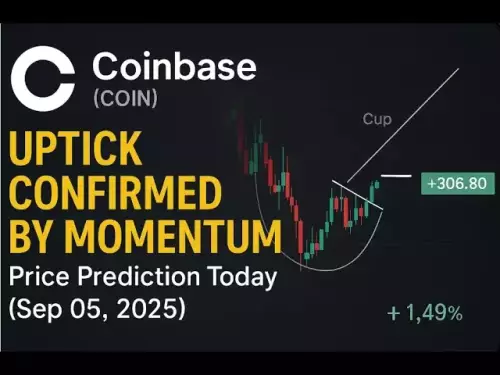-
 Bitcoin
Bitcoin $111400
0.98% -
 Ethereum
Ethereum $4328
0.50% -
 XRP
XRP $2.853
1.69% -
 Tether USDt
Tether USDt $1.000
0.00% -
 BNB
BNB $850.5
0.51% -
 Solana
Solana $205.1
0.70% -
 USDC
USDC $1.000
0.02% -
 Dogecoin
Dogecoin $0.2182
2.76% -
 TRON
TRON $0.3328
-0.55% -
 Cardano
Cardano $0.8346
3.00% -
 Hyperliquid
Hyperliquid $46.94
4.58% -
 Chainlink
Chainlink $22.41
-0.17% -
 Ethena USDe
Ethena USDe $1.001
0.01% -
 Sui
Sui $3.411
4.32% -
 Bitcoin Cash
Bitcoin Cash $611.2
3.75% -
 Stellar
Stellar $0.3604
2.04% -
 Avalanche
Avalanche $24.43
0.02% -
 Hedera
Hedera $0.2195
3.37% -
 Cronos
Cronos $0.2665
0.14% -
 UNUS SED LEO
UNUS SED LEO $9.533
0.25% -
 Litecoin
Litecoin $113.1
2.41% -
 Toncoin
Toncoin $3.101
-0.17% -
 Shiba Inu
Shiba Inu $0.00001244
2.94% -
 Polkadot
Polkadot $3.831
1.65% -
 Uniswap
Uniswap $9.445
1.92% -
 Dai
Dai $0.9999
-0.01% -
 Monero
Monero $267.3
-0.05% -
 Ethena
Ethena $0.6887
6.20% -
 Aave
Aave $305.4
-1.32% -
 World Liberty Financial
World Liberty Financial $0.1785
-3.15%
What is a "dead coin" or "zombie coin"?
A "dead coin" is a cryptocurrency that's lost all value, activity, and community support, often due to abandoned development, no trading volume, or scams.
Sep 04, 2025 at 06:36 pm
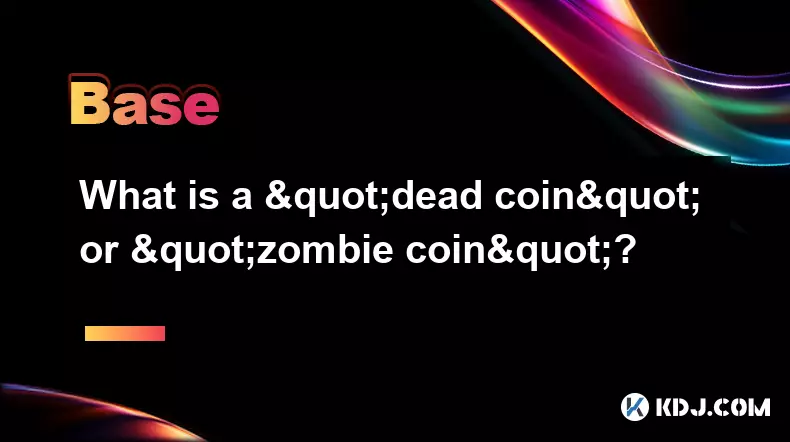
Understanding Dead Coins in the Cryptocurrency Ecosystem
1. A 'dead coin' refers to a cryptocurrency that has lost all market relevance, trading volume, and community support. These digital assets were typically launched with a specific purpose or technology but failed to gain traction or deliver on promises. Once active on exchanges and forums, they now linger with no price movement and zero developer activity.
2. The lifecycle of a dead coin often begins with an ambitious whitepaper and a small but enthusiastic team. Initial hype may lead to brief listings on minor exchanges, but without consistent updates, product development, or marketing, interest quickly fades. Investors lose confidence, trading dries up, and the coin effectively becomes inert.
3. Signs of a dead coin include inactive GitHub repositories, abandoned websites, and social media channels that haven’t posted in over a year. Many of these projects were victims of poor planning, lack of funding, or outright scams. In some cases, developers disappeared with raised funds, leaving investors with worthless tokens.
4. Zombie coins are a subset of dead coins—tokens that show minimal signs of life, such as occasional tiny trades or a single post on a forum. They are not entirely extinct but functionally useless. These coins often remain listed on obscure exchanges, giving the illusion of viability while serving no real economic purpose.
5. The existence of dead and zombie coins highlights the speculative nature of the crypto market. Thousands of tokens have been created during various bull runs, many without sustainable models. As the market matures, the number of inactive projects serves as a cautionary tale for investors evaluating new blockchain ventures.
How Projects Become Obsolete
1. A primary reason for a coin’s demise is the absence of a working product. Many projects raised funds through ICOs or IEOs but never delivered a functional blockchain, dApp, or service. Without utility, demand evaporates, and the token loses all value.
2. Loss of developer momentum is another critical factor. Open-source projects require continuous updates, security patches, and feature enhancements. When developers stop contributing, the technology stagnates, making the project vulnerable to obsolescence.
3. Community disengagement accelerates the decline. Active communities promote adoption, report bugs, and support marketing efforts. Once members leave, the ecosystem collapses. Forums go silent, Discord servers lose members, and Telegram groups become spam zones.
4. Exchange delistings compound the problem. As trading volume drops, exchanges remove the coin to reduce clutter. Without liquidity, even holders who want to sell cannot exit, trapping remaining value. This further discourages new investment.
5. Regulatory pressure or legal issues can also kill a project. If a token is deemed a security and the team lacks compliance, authorities may shut it down. Legal battles drain resources, and prolonged uncertainty drives away users and partners.
Identifying Inactive Cryptocurrencies
1. Check blockchain explorers for transaction activity. A dead coin will show no or negligible transactions over weeks or months. Legitimate networks have consistent block production and user interactions.
2. Monitor development repositories. Platforms like GitHub reveal whether code is being updated. No commits in six months or more indicate abandonment. Look for open issues with no responses and stalled pull requests.
3. Review social media and official communication channels. Projects that no longer post updates, respond to users, or engage with their audience are likely defunct. Fake engagement, such as bot-generated likes or comments, is a red flag.
4. Analyze exchange data. Use platforms like CoinGecko or CoinMarketCap to view trading volume and market cap trends. A steady decline to near-zero volume, especially across all exchanges, signals irrelevance.
5. Investigate team visibility. Founders and core developers who disappear from public view or remove their profiles from LinkedIn and project websites suggest the project is no longer operational.
Frequently Asked Questions
What happens to the funds invested in a dead coin?Investors typically lose their capital when a coin dies. Without a functioning market or redemption mechanism, tokens become untradeable and valueless. Recovery is nearly impossible unless the team initiates a buyback or migration, which is rare.
Can a dead coin be revived?Revival is uncommon but not impossible. A new team could fork the code, relaunch the network, or reintroduce the token with updated branding and technology. Success depends on regaining trust and delivering tangible improvements.
Are dead coins still a security risk?Yes. Abandoned projects may have unpatched vulnerabilities. If the original smart contracts hold residual funds, they become targets for hackers. Additionally, scammers often rebrand dead coins to deceive new investors.
How many dead coins exist in the market?Estimates suggest over 50% of all listed cryptocurrencies show signs of inactivity. Data from research firms indicate thousands of tokens have no trading volume or development activity, contributing to market clutter and investor confusion.
Disclaimer:info@kdj.com
The information provided is not trading advice. kdj.com does not assume any responsibility for any investments made based on the information provided in this article. Cryptocurrencies are highly volatile and it is highly recommended that you invest with caution after thorough research!
If you believe that the content used on this website infringes your copyright, please contact us immediately (info@kdj.com) and we will delete it promptly.
- Hyperliquid, USDH Stablecoin, and DeFi Growth: A New Era?
- 2025-09-06 03:50:12
- Solana's Tug-of-War: Bulls vs. Sellers – Who's Winning?
- 2025-09-06 02:45:16
- Crypto Tokens, SEC Regulation, and Market Explosion: Navigating the Web3 Revolution
- 2025-09-06 02:45:16
- Crypto Coins in 2025: Spotting the Next Big Investment
- 2025-09-06 03:05:15
- Altcoins: Profit Potential or High-Risk Gamble?
- 2025-09-06 03:05:15
- Ethereum Price, PEPE Coin, and Layer 2s: What's the Hype?
- 2025-09-06 03:16:35
Related knowledge
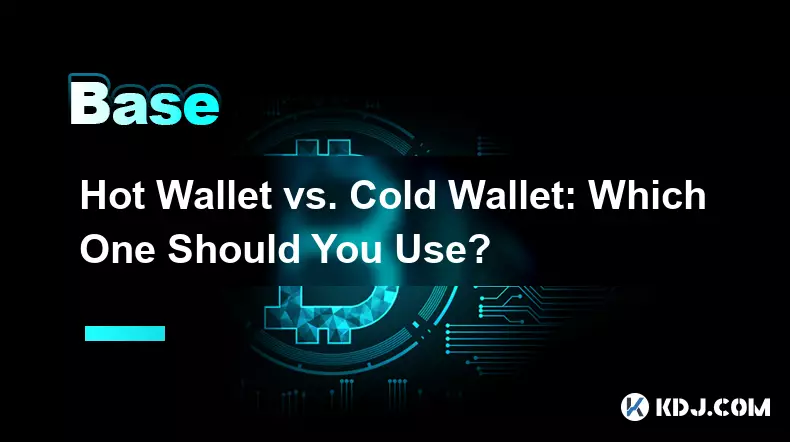
Hot Wallet vs. Cold Wallet: Which One Should You Use?
Sep 05,2025 at 06:19pm
Understanding Hot Wallets in the Cryptocurrency Ecosystem1. A hot wallet is a digital cryptocurrency wallet that remains connected to the internet at ...

What is "backtesting" a crypto trading strategy?
Sep 03,2025 at 10:55am
Understanding Backtesting in Crypto TradingBacktesting is the process of evaluating a trading strategy by applying it to historical market data. Trade...

What is a "crypto trading bot" and do they work?
Sep 02,2025 at 04:19pm
Understanding Crypto Trading Bots1. A crypto trading bot is a software application designed to automate the process of buying and selling cryptocurren...

What is a "copy trading" platform?
Sep 02,2025 at 07:00pm
Understanding Copy Trading in the Cryptocurrency Space1. A copy trading platform allows users to automatically replicate the trades of experienced inv...
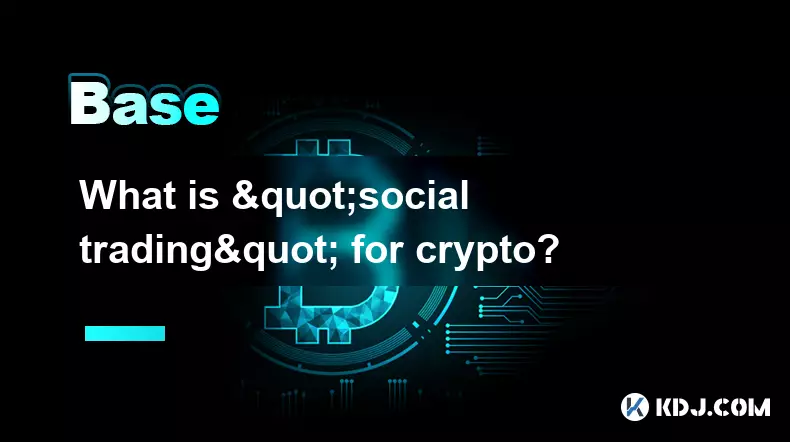
What is "social trading" for crypto?
Sep 03,2025 at 09:00pm
Understanding Social Trading in the Cryptocurrency Space1. Social trading refers to a method where investors observe, follow, and automatically replic...
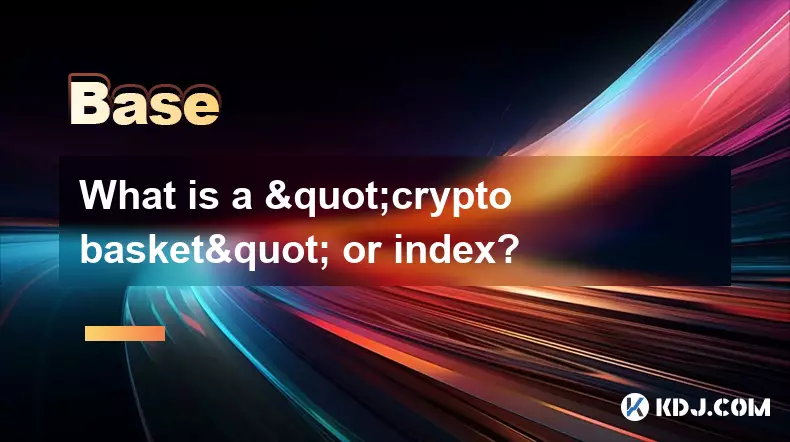
What is a "crypto basket" or index?
Sep 03,2025 at 07:01am
Understanding Crypto Baskets and Their Role in Digital Asset Investment1. A crypto basket refers to a curated collection of multiple cryptocurrencies ...

Hot Wallet vs. Cold Wallet: Which One Should You Use?
Sep 05,2025 at 06:19pm
Understanding Hot Wallets in the Cryptocurrency Ecosystem1. A hot wallet is a digital cryptocurrency wallet that remains connected to the internet at ...

What is "backtesting" a crypto trading strategy?
Sep 03,2025 at 10:55am
Understanding Backtesting in Crypto TradingBacktesting is the process of evaluating a trading strategy by applying it to historical market data. Trade...

What is a "crypto trading bot" and do they work?
Sep 02,2025 at 04:19pm
Understanding Crypto Trading Bots1. A crypto trading bot is a software application designed to automate the process of buying and selling cryptocurren...

What is a "copy trading" platform?
Sep 02,2025 at 07:00pm
Understanding Copy Trading in the Cryptocurrency Space1. A copy trading platform allows users to automatically replicate the trades of experienced inv...

What is "social trading" for crypto?
Sep 03,2025 at 09:00pm
Understanding Social Trading in the Cryptocurrency Space1. Social trading refers to a method where investors observe, follow, and automatically replic...

What is a "crypto basket" or index?
Sep 03,2025 at 07:01am
Understanding Crypto Baskets and Their Role in Digital Asset Investment1. A crypto basket refers to a curated collection of multiple cryptocurrencies ...
See all articles

























